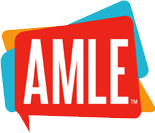| |
The Schools To Watch™ Criteria
ACADEMIC EXCELLENCE High-performing schools with middle grades are academically excellent. They challenge all students to use their minds well. - All students are expected to meet high academic standards.
- Curriculum, instruction, assessment, and appropriate academic interventions are aligned with high standards.
- The curriculum emphasizes deep understanding of important concepts and the development of essential skills.
- Instructional strategies include a variety of challenging and engaging activities that are clearly related to the grade-level standards, concepts, and skills being taught.
- Teachers use a variety of methods to assess and monitor the progress of student learning (e.g., tests, quizzes, assignments, exhibitions, projects, performance tasks, portfolios, student conferences).
- The faculty and master schedule provide students time to meet rigorous academic standards.
- Students are provided the support they need to meet rigorous academic standards.
- The adults in the school are provided time and frequent opportunities to enhance student achievement by working with colleagues to deepen their knowledge and to improve their standards-based practice.
DEVELOPMENTAL RESPONSIVENESS
High-performing schools with middle grades are sensitive to the unique developmental challenges of early adolescence. - The staff creates a personalized environment that supports each student's intellectual, ethical, social, and physical development.
- The school provides access to comprehensive services to foster healthy physical, social, emotional, and intellectual development.
- All teachers foster curiosity, creativity and the development of social skills in a structured and supportive environment.
- The curriculum is both socially significant and relevant to the personal and career interests of young adolescents.
- Teachers use an interdisciplinary approach to reinforce important concepts, skills, and address real-world problems.
- Students are provided multiple opportunities to explore a rich variety of topics and interests in order to develop their identity, learn about their strengths, discover and demonstrate their own competence, and plan for their future.
- Students have opportunities for voice—posing questions, reflecting on experiences, and participating in decisions and leadership activities.
- The school staff members develop alliances with families to enhance and support the well-being of the children.
- Staff members provide all students with opportunities to develop citizenship skills, to use the community as a classroom, and to engage the community in providing resources and support.
- The school provides age-appropriate, co-curricular activities to foster social skills and character, and to develop interests beyond the classroom environment.
SOCIAL EQUITY
High-performing schools with middle grades are socially equitable, democratic, and fair. They provide every student with high-quality teachers, resources, learning opportunities, and supports. They keep positive options open for all students. - To the fullest extent possible, all students, including English learners, students with disabilities, gifted and honors students, participate in heterogeneous classes with high academic and behavioral expectations.
- Students are provided the opportunity to use many and varied approaches to achieve and demonstrate competence and mastery of standards.
- Teachers continually adapt curriculum, instruction, assessment, and scheduling to meet their students' diverse and changing needs.
- All students have equal access to valued knowledge in all school classes and activities.
- Students have ongoing opportunities to learn about and appreciate their own and others’ cultures.
- The school community knows every student well.
- To the fullest extent possible, the faculty welcomes and encourages the active participation of all its families and makes sure that all its families are an integral part of the school.
- The school’s reward system is designed to value diversity, civility, service, and democratic citizenship.
- To the fullest extent possible, staff members understand and support the family backgrounds and values of its students.
- The school rules are clear, fair, and consistently applied.
ORGANIZATIONAL STRUCTURES AND PROCESSES
High-performing schools with middle grades are learning organizations that establishe norms, structures, and organizational arrangements to support and sustain their trajectory toward excellence. - A shared vision of what a high-performing school is and does, drives every facet of school change.
- The principal has the responsibility and authority to hold the school-improvement enterprise together, including day-to-day know-how, coordination, strategic planning, and communication.
- The school is a community of practice in which learning, experimentation, and the opportunity for reflection are the norm.
- The school and district devote resources to content-rich professional learning, which is connected to reaching and sustaining the school vision and increasing student achievement.
- The school is not an island unto itself; it is a part of a larger educational system, i.e., districts, networks and community partnerships.
- The school staff holds itself accountable for student success.
- District and school staff possess and cultivate the collective will to persevere, believing it is their business to produce increased achievement and enhanced development of all students.
- The school staff and district staff partner with colleges and universities.
- The school includes families and community members in setting and supporting the school's trajectory toward high performance.
|

.jpg)